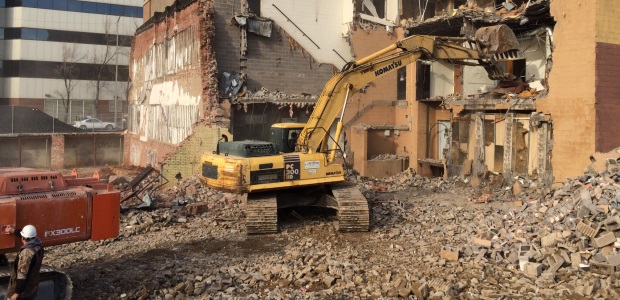
OSHA Offers New Demolition Safety Resources
The agency has updated its demolition website, stocking it with more guidance and training documents, news releases, and links to industry organizations and federal agencies’ materials.
"Construction in reverse, with additional hazards" is the memorable description OSHA gives for demolition on its updated topic page, with a July 10 news release quoting the agency's chief, Dr. David Michaels, who noted several recent fatal incidents caused the update:
- On June 20, a construction worker taking down an old Blockbuster Video building in New Jersey died when the last standing wall collapsed on top of him.
- In early 2014, a 25-year-old construction worker in Chicago was struck and killed by pieces of falling concrete while renovating a shopping mall.
- The June 5, 2013, collapse of a four-story building undergoing demolition in Philadelphia killed six people and injured 14. OSHA issued 12 safety citations against two companies and a total of #397,000 in proposed penalties in connection with the incident.
The updated site focused on 29 CFR 1926 Subpart T offers more guidance and training documents, news releases, and links to industry organizations (such as the National Demolition Association) and federal agencies’ materials.
"Demolition workers face many hazards and their lives should not be sacrificed because of deliberate neglect of demolition fundamentals," Michaels said. "Employers must ensure that all workers involved in a demolition project are fully aware of hazards and safety precautions before work begins and as it progresses."
The site points out that demolition work has many of the same hazards as construction work, along with several additional ones:
- Changes from the structure's design introduced during construction
- Approved or unapproved modifications that altered the original design
- Materials hidden within structural members, such as lead, asbestos, silica, and other chemicals or heavy metals requiring special material handling
- Unknown strengths or weaknesses of construction materials, such as post-tensioned concrete
- Hazards created by the demolition methods used
The release says from 2009 to 2013, OSHA issued nearly 1,000 citations for violations of OSHA's construction demolition standards, and the most common citation was for failing to conduct an engineering survey to determine the condition of the structure prior to demolition.